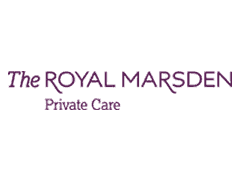Customers today expect a consistent and seamless experience across every interaction with your brand.
Whether browsing your website, viewing your latest LinkedIn update, or speaking directly to a sales representative, customers want one thing – a coherent message. Disjointed messaging or conflicting information at any stage can result in frustration and lost business.
What is Omnichannel Marketing?
Omnichannel marketing is the strategic approach that ensures continuity across platforms, devices, and departments. Its goal is to provide a unified experience regardless of where, when, or how a customer engages with your brand.
In today’s fragmented digital environment, users regularly switch between devices and channels before making a purchasing decision. The average B2B buyer interacts with a brand at least eight times before becoming a viable sales lead. These touchpoints could occur in quick succession or over several months, but in every case, the experience should be cohesive.
According to HubSpot, more than 80% of companies that prioritise customer experience are reporting an increase in revenue. And this is where inbound marketing comes into play; deliver the right content that brings people to you.
How to take an Omnichannel Approach
Creating an omnichannel marketing strategy requires planning, alignment, and continuous refinement. Here’s how to get started:
Segment your audience
Start by developing detailed buyer personas. These profiles should capture:
- Purchasing behaviour and preferences
- Communication channel preferences
- Typical customer journey patterns
- Pain points and motivations
Understanding your audience enables you to identify key touchpoints. Review how prospects interact with your brand, from initial discovery through to purchase. Identify drop-off points, confusing steps, or inconsistent messaging, and improve accordingly.
A well-segmented CRM is essential. Personalised messaging improves engagement, while irrelevant content can alienate your audience.
Align Content with Buyer Journeys
Once you’ve mapped the buyer journeys, tailor content to meet users at every stage. Use inbound marketing to guide this process – provide helpful, relevant content that supports user intent.
For example, behaviour-triggered emails are highly effective in eCommerce and B2B contexts. These automated emails respond to specific user actions, offering timely, personalised communication that builds trust and encourages conversion.
Select the Right Channels
An omnichannel strategy does not require a presence on every platform. Instead, prioritise channels that:
- Align with your audience’s preferences
- Support your marketing goals
- Deliver measurable value
If your customers are not using a specific channel – such as X (formerly Twitter), there’s little benefit in maintaining an active presence there. Focus your resources where they matter most.
Integrate Customer Support
Customer support teams are often the final point of contact before conversion or retention. They must align with marketing to ensure messaging, tone, and expectations are consistent.
Cross-department collaboration is vital. A well-informed support team reinforces marketing efforts and provides a seamless customer experience.
Embrace Technology and AI
To remain competitive in 2025, integrate tools like AI-driven personalisation, predictive analytics, and unified commerce platforms. These technologies enable:
- Tailored content based on user behaviour
- Cross-channel campaign visibility
- Intelligent customer service and automation
Platforms such as HubSpot help consolidate data, automate actions, and measure performance across the full marketing ecosystem.
Measure and Refine Continuously
Data measurement underpins every successful omnichannel strategy. Use analytics tools to:
- Track customer behaviour across channels
- Monitor campaign performance
- Identify opportunities for optimisation
A simplified analytics setup enables clear visibility without overwhelming complexity. The insights gained will refine future efforts and strengthen ROI.
Why Does Omnichannel Marketing Matter?
A strategic omnichannel approach delivers:
- Stronger customer relationships
- Increased brand trust and loyalty
- Higher conversion rates
- Improved operational efficiency
If you are wondering how all this could work for your business, ExtraDigital can help. Specialising in B2B & B2C marketing, we can give you the advice you need to turn all your channels into effective touchpoints that contribute to the overall success of your business.










